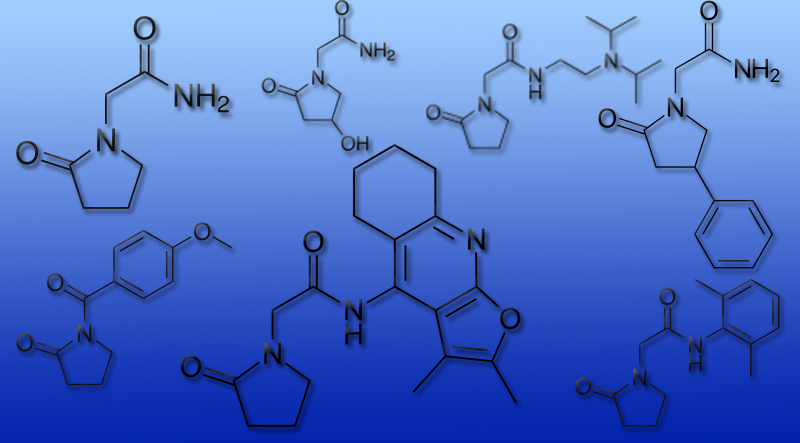Last updated on December 6th, 2019 at 05:49 pm
The racetams are a class of nootropic drugs that are generally accepted as safe and efficacious in enhancing memory. These drugs share a 2-Pyrrolidone nucleus.
Table of Contents
Examples
There are many racetam drugs; listed below are notable examples of these nootropics:
- Piracetam – Water-soluble
- Aniracetam – Fat-soluble, anxiolytic
- Oxiracetam – Water-soluble, enhances learning ability
- Pramiracetam – Fat-soluble
- Phenylpiracetam – Improves stamina and tolerance to cold
- Nefiracetam – Antidementia drug, may lower testosterone
Also worth mentioning is Noopept, however, this drug is not from the racetam family, but is instead derived from it. Noopept possesses unique attributes of its own including the ability to increase BDNF as well as NGF, both of which are very important for neural growth and survival.
Other racetam drugs include:
- Brivaracetam – anticonvulsant-like properties
- Coluracetam – choline uptake enhancer, antidepressant and anxiolytic
- Dimiracetam – potential use in neuropathic pain
- Etiracetam
- Fasoracetam
- Imuracetam
- Levetiracetam – anticonvulsant used to treat epilepsy. It is the S- enantiomer of etiracetam.
- Nebracetam – antidepressant
- Nicoracetam
- Rolipram – PDE4-inhibitor, antidepressant, anti-inflammatory, neuroprotective, improves long term memory and wakefulness
- Rolziracetam
- Seletracetam – structurally similar to levetiracetam
Potentially harmful racetam drugs
Nefiracetam
When male beagle dogs were treated with 180 or 300 mg/kg per day of the drug once and for 1 and 4 weeks, testicular testosterone level was decreased. Likewise, when rats were orally administered daily at 1500 mg/kg for 4 weeks, serum and testicular testosterone level was decreased. It is important to note that high doses were used when treating the dogs and rats. Therefore, it may not necessarily have the same effect at a lower dose. More studies are needed to confirm Nefiracetam’s ability to reduce testosterone levels.
References
1. K, Shimomura, Shimada M, Hagiwara M, Harada S, Kato M, and Furuhama K. “Testicular Toxicity Induced in Dogs by Nefiracetam, a Neutrotransmission Enhancer.” National Center for Biotechnology Information. U.S. National Library of Medicine, 18 May 2004. Web. <http://www.ncbi.nlm.nih.gov/pubmed/12849691>.
2. M, Shimada, Shikanai Y, Shimomura K, Harada S, Watanabe G, Taya K, Kato M, and Furuhama K. “Investigation of Testicular Toxicity of Nefiracetam, a Neurotransmission Enhancer, in Rats.” (2003). National Center for Biotechnology Information. U.S. National Library of Medicine, 28 Aug. 2003. Web. <http://www.ncbi.nlm.nih.gov/pubmed/12849691>.

